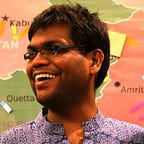Immigrant Chronicles
(An edited version of this book review was first published in Business Standard.)
Prochy N. Mehta’s fascinating new book Pioneering Parsis of Calcutta (2020) sheds light on the enduring legacy of her own community in a city she prefers to address by its colonial name Calcutta, also preferred by the English-speaking elite of today and yesteryears. Her meticulous research has led to a remarkably interesting compendium on Parsi traders, philanthropists, barristers, community leaders, bureaucrats, and stalwarts from other fields.
In this 186-page volume published by Niyogi Books, Mehta writes, “The first Parsi who came to Calcutta around 1767 was Dadabhai Behramji Banaji. Parsis used to trade with Armenian brokers in Surat. These Armenians came to Murshidabad and thence to Calcutta. It is possible that some Parsi traders may have accompanied these Armenians, first to Murshidabad and then Calcutta. Many of the Parsi families that first settled in Calcutta did so around the Armenian localities.”
The front cover is adorned by an image of Bhuggasarth Parsi priests walking from Navsari carrying the ‘alaat’ (holy fire) and crossing the old wooden pontoon Howrah Bridge. It draws attention to the fact that the Parsis came to India seeking refuge from religious persecution, maintained their distinct cultural traditions, and flourished in their new environment. This book is a testament to their entrepreneurial spirit, a strong ethic of service, and a passion for building institutions that foster solidarity among community members.
We learn about Sir Jamshedjee Jeejeebhoy who traded in opium, earned a fortune, and donated generously to charities during the Bengal famine of 1943. Nusserwanji Cawasji Petit, who managed his father-in-law’s estate in Calcutta, worked closely with the French who called him ‘Petit’ because of his diminutive stature. This name became his surname. Rustomji Cowasji Banaji ran a company that owned about forty ships, many of which were chartered by the British Government for war purposes or hired to send Indian labourers to the Mauritius Islands. K Cowasji Gora was an architect who helped in the construction of New Market, a thriving shopping area.
Mehta has constructed a rich narrative using archival material such as letters and press clippings. The book jacket states, “These extraordinary Parsi men and women played a prominent role in society by taking upon themselves the responsibility of helping one and all regardless of class, caste, creed or colour. Their ability in business and faith in the future was matchless. These early Parsis were not afraid of taking on the establishment and fought publicly to resolve disputes where the orthodox members were unwilling to give the reformists their way.”
While Parsi women such as Bella, Ratanbai Meherwanji Mehta, Jaloo Navel Kanga, Bai Pirojbai, and Hilla Ginwala are mentioned in the book, sometimes along with their photographs, the reader is not privy to any information about their lives or contributions. They are typically introduced in relation to their father or their husband. This appears surprising since the author herself is an accomplished woman in her own right.
As a sportsperson, Mehta represented West Bengal in hockey and basketball, and India in Masters Athletics. She is also the President of the Athletic Coaches Association of Bengal, the first female President of the Calcutta Parsee Club, and a director in several companies.Her wide network would have been immensely beneficial while putting together this book.
The lack of any in-depth engagement with Parsi women’s place in the history of Calcutta stands out especially when the author describes the personal reason behind all the research she painstakingly carried out. The journey began when her granddaughter, “a child whose Navjote (a ceremony marking initiation into Zoroastrianism) had been performed” was refused permission to enter a religious place of worship using the premise that she was not a Parsi.
The debate around who is a Parsi, and who is not, is connected to questions of gender, patriarchy and inheritance. Why should things be any different for the child of a Parsi woman who marries a non-Parsi man than the child of a Parsi man who marries a non-Parsi woman? What about children who are adopted by Parsi parents? Mehta began to take an interest in these questions because she did not want her daughter’s children to be treated any differently than her son’s children.
However, she pushes the envelope only up to a certain extent. For example, Jamsetjee Framjee Madon, who was touring Calcutta with the Elphinstone Natak Company, is described thus: “The young lad got enamoured of the stage, copying the roles of the heroes and heroines of the plays and later playing small roles on stage. Since he had a good voice, he could act the part of a courtesan and became quite popular.”
It would have been exciting to read about challenges to gender normativity among Parsis in Calcutta, as well as same-sex partnerships in the community but Mehta does not go down this route. Despite the absences, one cannot help but acknowledge what a stupendous piece of work this book is.
